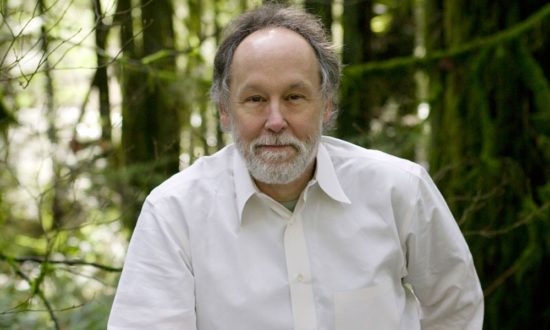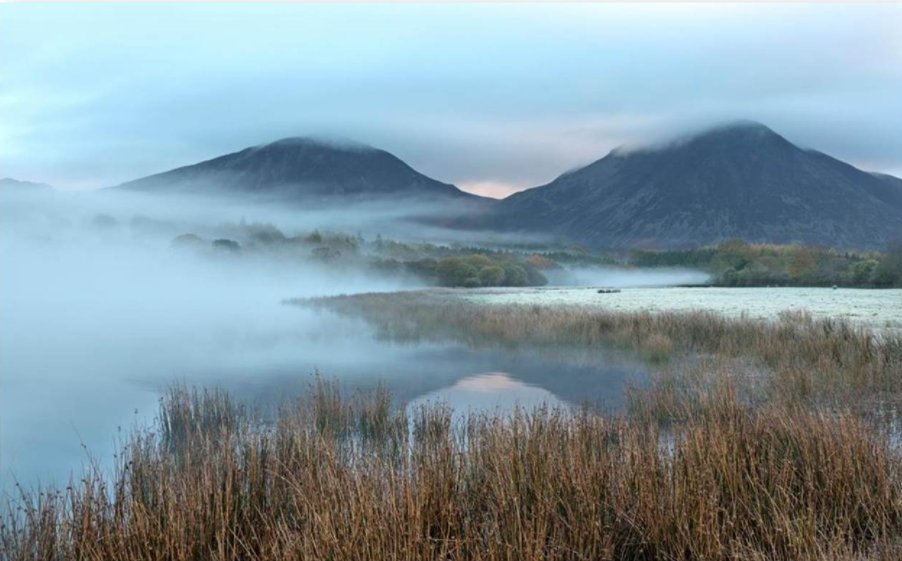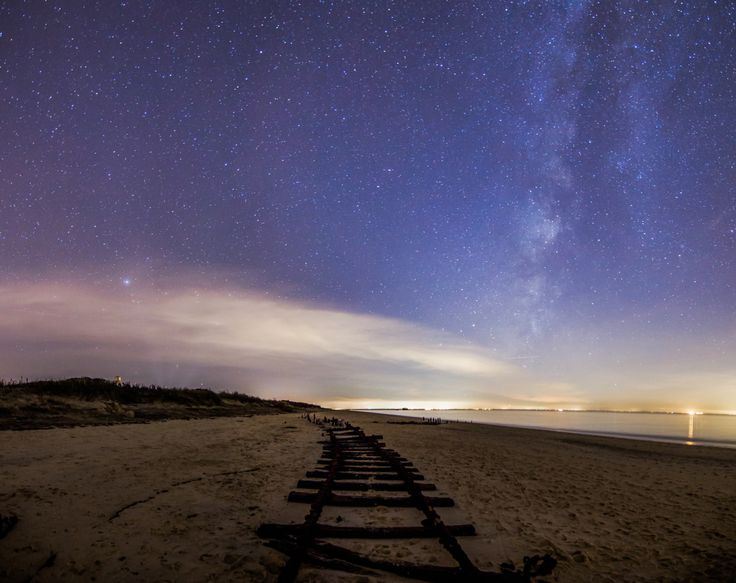
After 9/11, I had a two-part image in my head.
I recall the strikingly clarity and vividness of that morning as if it were yesterday. A storm had swept the Northeast the day before, giving rise to a rare meteorological phenomenon known as “severe clear.” I remember looking up while I was walking Rudy and just diving into its photorealism, inhaling everything that was rejuvenating about it. I know where I was standing when it hit me.
But then, like a punishment, the clarity and wonder almost got dashed by the weeks and haunting years that followed, but still I remembered the daybreak that started it all, and how different its offering was.
Maybe because both branded me so powerfully, both have stayed—conjoined in my head—down to this morning. Promise then punishment. Hope then pain.
Has that ever happened to you, where opposites find themselves standing side-by-side and it becomes impossible to forget their inevitability?
That you should never fall for the one because there’s always the other.
As it’s turned out, there was another terrible prophecy in that cerulean blue sky 18 years ago, and it’s two-part disharmony is proving equally indelible. It’s the daily splendor I see outdoors together with all that our failures of stewardship have wrought, as Greenland melts into the sea and hot spots pop up in Rhode Island and now, right across from me, in New Jersey.
I live in a kind of arboretum that frequently astonishes me with its beauty–whether it’s Rudy or now Wally who lets me stop and look up at it, down and all around at it every morning.
In my mind’s eye, I refuse to harness the promise of “severe clear” or even of more dappled mornings to the degradation that almost daily seems to be marching my way.
When I see the one I no longer want to see the other. But it takes daily acts of faith, hope and love to break them apart.
A Deeper Future Than Man Can Make On His Own
When I read Robert MacFarlane’s Underland: A Deep Time Journey last summer, I responded to it with notes, markings on the page and, at least twice, with a “Wow” and exclamation point. The book chronicles MacFarlane’s intrepid wanderings through caves, excavations, sink holes, labyrinths, the quietest tunnels of bedrock, and some of the world’s remotest places. I regularly wondered “why” he was seeking out these claustrophobic and often dangerous destinations and his answer always seemed to be: because he was somehow drawn to them.
For more than 15 years now, I have been writing about the relationships between landscape and the human heart. What began as a wish to solve a personal mystery — why I was so drawn to mountains as a young man that I was, at times, ready to die for love of them — has unfolded into a project of deep-mapping.
These “relationships” between landscape and the human heart are richer and more complicated than Nature gives, on the one hand, Man takes or Man destroys, on the other. In ways he couldn’t always explain, MacFarlane was convinced that there was more to it than that, and whatever was calling out to him might be found if he climbed higher, probed deeper and kept better maps. He described his current motivation this way:
Our ‘flat perspectives’ feel increasingly inadequate to the deep worlds we inhabit, and to the deep time legacies we are leaving
With his “why-question” in mind, my first Wow came towards the end of a chapter called “The Understorey (Epping Forest, London)” about the extraordinary subterranean connections that fungi make to unite the trees into the organism of a forest. MacFarlane finds the modern words that we have—our human-centric words–inadequate to describe what the trees and the fungi have accomplished here, so he looks to a Native American language. (“In Potawatami, not only humans, animals and trees are alive, but so too are mountains, boulders, winds and fire.”) Acknowledging the life around them and their almost intentional roles, native language always made humans integral to the world but never at the center of it because all these other intentionalities have their priorities too. If we’re to restore the relationship between landscape and the human heart, we need to look deeper than the language-based understandings we have today.
The real underland of language is not the roots of single words. but rather the soil of grammar and syntax, where habits of speech and therefore also habits of thought settle and interact over long periods of time. Grammar and syntax exert powerful influence on the proceedings of language and its users. They shape the ways we relate to each other and to the living world. Words are world-makers—and language is one of the great geological forces of the Anthropocene [or Age of Man].
As we consider the underland of today’s language amidst the trees of Epping Forest, MacFarlane suggests that we can reshape, with words, the world that we experience into one of interdependence or symbiosis—create what one philosopher has dubbed “the Symbiocene”—instead of furthering a language-driven age that is dominated by human imperatives alone.
Another Wow came towards the end of a harrowing rite of passage. It delivered MacFarlane to an ancient cave on a remote Norwegian island that had been decorated with paintings of people dancing in the fire that had by brought by pilgrims since the dawn of time.
His Norwegian hosts, only too familiar with the environs, ask him why he is so driven to travel there alone in a dangerous, storm-tossed season, but his “reasoning” seems “weak” to explain it, so he doesn’t even try. It’s likely because the pull of a “thin place” like this, where “the borders between worlds or epochs feel at their most fragile,” is deeper than either reason or emotion, buried in heredity, like some instinct to find a better way to survive. And indeed, it’s the very different life force of our ancestors that MacFarlane manages to encounter deep in a cave in Lofotens, Norway.
At first, depleted by the penitential route, he can’t even see the cave paintings. But in his battery’s light:
when I open my eyes and look again, there is—yes, there, there—the flicker of line that is not only of the rock’s making. The line is crossed by another, and joined by a third, and there, there, yes, is a red dancer, scarcely visible but unmistakable, a phantom red dancer leaping on the rock. And there is another, and another, here, a dozen or more of them, spectral still but present now, leaping and dancing on the rock, arms outstretched and legs wide, forms shifting and tensing as I blink.
Their red is rough at its edges, fading back into the rock that made it, blurred by water and condensation, and all of these circumstances—the blur, the low light, my exhaustion, my blinks—are what give the figures their life, make them shift shapes on this volatile canvas in which shadow and water and rock and fatigue are all artists together, and for once the old notion of ghosts seems new and true in this space. These figures are ghosts all dancing together, and I am a ghost too, and there is a conviviality to them, to us, to the thousands of years for which they have been dancing here together.
MacFarlane’s story–about risking your safety to see what ancient joy and celebrating life might have looked and even felt like–ends with a modest claim about its significance. He even lets someone else make the necessary comparison.
Shortly after the Nazi death camps were liberated during World War II, the prehistoric cave paintings of Lascaux, France were discovered: an extraordinary counterpoint about the nature of humanity. Fifteen years later, when an escalating nuclear arms race was foreshadowing a different kind of doom, philosopher George Bataile went down into the Lascaux caves. When he returned to the surface, MacFarlane quotes him as saying: “I am simply struck by the fact that light is being shed on our birth at the very moment when the notion of our death appears to us.”
MacFarlane’s job as a writer is to connect the underland of his instincts and intuitions with his readers’ world. As we’re pressed each day with the “inevitability” of a dying, unsustainable planet, he shows us that there are deeper ways to envision our future in the language that we use as well as in the ways we can recapture our truer natures beneath the cerulean sky.
It’s embedded within us. We’ve done it before. There are maps that can help us find it.
A Modern Photo Arc and Additional Irrational Acts
Joel Sartore is a National Geographic photographer who has been documenting the world’s captive animal species. Many of them are on the verge of extinction or are endangered or may soon be. He’s already photographed around 9,000 out of around 12,000 in captivity, and his pictures—which are taken in special sets to highlight each animal’s unique characteristics (a story in itself)—are strikingly beautiful at the same time that they engage us with their plight.
To Santore, the zoos where he takes his pictures are no longer warehouses or curiosity shops but conservation centers providing hopeful bridges from where we are today to where we may be headed. As Sartore recounted in a 2017 interview, by the turn of the next century we could stand to lose half of the earth’s current species and many of his photographs could merely be reminders. Or maybe far more than that.
His project is called the Photo Arc. His photos are featured in a series of books, in magazine articles and on his website. They glow like votive candles.
More than a documentarian, Sartore is also a storyteller with an eye for the funny or moving details that make his critters come alive when he talks about them. (He is the man that you hope will bring out the armadillo to meet your children at the zoo.) But as wonderous as the Photo Arc project—his protecting on film these animals that may soon be lost—it was not nearly as compelling to me as what he and some of his fellow naturalists are also doing right now to sustain the animals that still remain.
As Sartore heralds in his interview, one of these Noahs is Tilo Nadleer, who was an electronics specialist but now runs a primate center in Vietnam. Nadleer noticed that the police who were capturing animal smugglers had nowhere to put the animals they also recovered (baby primates, mostly) so they would euthanize them. It seemed unthinkable, but what could he do? So he took on the job of caring for these orphans himself, eventually building huge enclosures, feeding them with native vegetation from an adjacent national park. Nadleer tried to release them back into the wild but his primates kept getting shot, eaten or captured by smugglers again, so he now has successful breeding colonies, with a big percentage of the world’s population of three or four species. Sartore calls him “a time capsule.”
He started a project that he knew in his lifetime would never be complete. He is buying time for many of these animals, hoping that people will quit shooting them and people will leave the forests intact,
His work is an act of faith, hope and love.
Don and Ann Butler’s work at Pheasant Heaven in North Carolina is too. They’re breeding species of pheasant that are extinct in the wild. And then there is Santore himself, call it his second job. He bought land in Nebraska, where he lives, that included “alkaline wetlands and really steep uplands” where a rare breed of bird (long-billed curlews) along with other migrating species, like avocets and sandpipers, happen to breed. “I just wanted to save a little piece,” he said, “to save a little corner, protect something,” not really knowing whether it would make a difference, but feeling that he had to anyway.
These aren’t coins in a wishing well, but counter-testimony that Nadleer, the Butlers and Santore are giving (without breast-beating or fanfare) so that their actions are also recorded in the record of degradation and destruction around them. What else could they do? Well, they could do nothing because there is no assurance that their work will even begin to turn the tables. But they’re doing it anyway.
As Robert MacFarlane might put it, they’ve chosen to deepen the relationship between landscape and the human heart. And that, just that, might end up making all the difference.
This post was adapted from my October 20, 2019 newsletter. When you subscribe, a new newsletter/post will be delivered to your inbox every Sunday morning.




 I recommend Casper Henderson’s A New Map of Wonders: A Journey in Search of Modern Marvels. It’s a rambling, lively and insightful discourse on the wonders that are all around us.
I recommend Casper Henderson’s A New Map of Wonders: A Journey in Search of Modern Marvels. It’s a rambling, lively and insightful discourse on the wonders that are all around us.
